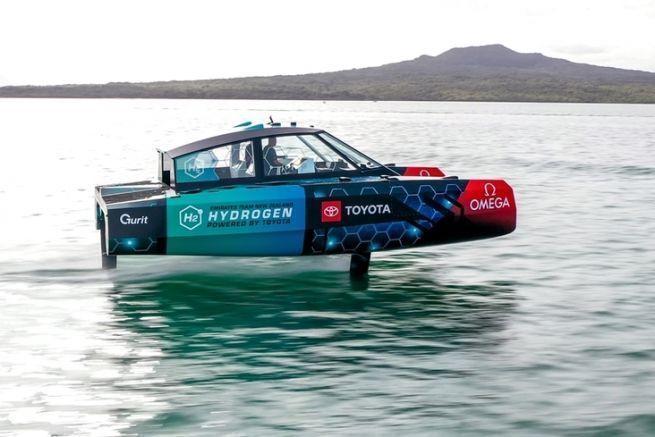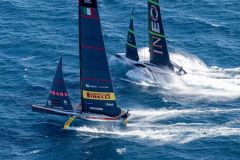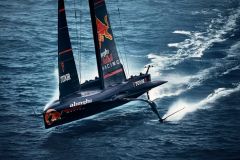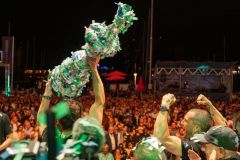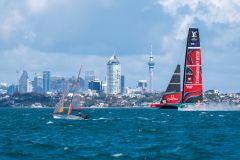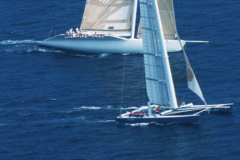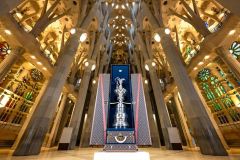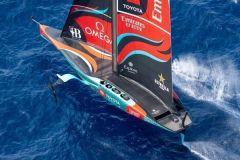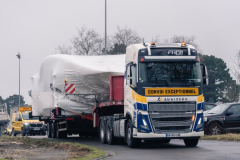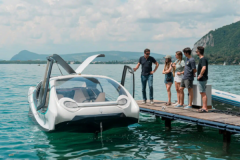Towards a reduction in emissions during the Cup
After its last victory in the America's Cup, the New Zealand syndicate Emirates Team New Zealand has been working to reduce the carbon footprint of the event. The symbolism of powerful tenders with large outboard engines assisting a fleet of sailboats was the most striking to the general public, so it was decided to eliminate these large fossil fuel powered support boats.
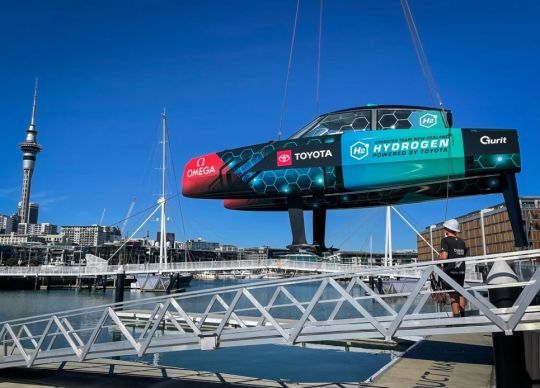
Instead, the New Zealand syndicate's design office has developed a prototype hydrofoil support boat, powered by a hydrogen fuel cell. The specifications for a support boat in the Cup include the obligation to sail at 50 knots, to embark six crew members and to have a range of several hours.
How does this hydrogen catamaran work?
Named "Chase Zero", the prototype is a hydrofoil catamaran equipped with two hydrogen fuel cells. Developed by Toyota, these cells convert the hydrogen gas stored on board into a 400V direct current that powers two Emrax engines developing 295 horsepower. These are connected to Mercury propellers housed in the hulls.
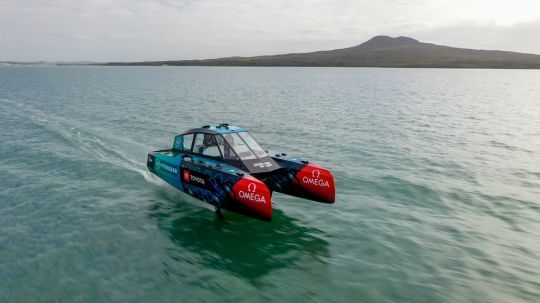
The hydrogen is stored in four composite tanks at a pressure of 350 bars.
Why hydrogen?
The choice of hydrogen as an energy source has several advantages. First of all, a hydrogen fuel cell does not emit any emissions into the atmosphere. The only emission during operation is H2O, i.e. pure water. The question of the virtuous production of hydrogen remains, however, a question.
The reduction in sound volume is also appreciable, although the closed wheelhouse of the Chase Zero accentuates the resonance box phenomenon.
The architectural choice of a hydrofoil catamaran imposes a minimum weight on board. The batteries and tanks together weigh less than 400 kg. In comparison, an AGM battery energy equivalent would weigh nearly 2500 kg, and they would have to be recharged after each day of racing.
In previous editions, the assistance RIBs equipped with two 250 HP engines consumed about 800 liters of gasoline per day.
Promising trials
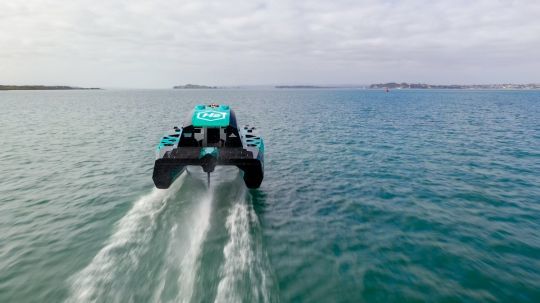
The computer controlled foils improve the performance of the "Chase Zero", which has already shown great potential. During its full throttle testing, it reached 50.3 knots, the maximum speed achieved by an AC 75. At cruising speed, about 30 knots, the Chase Zero covered nearly 170 miles in almost 6 hours, which is more than enough time to cover one day of Cup racing.
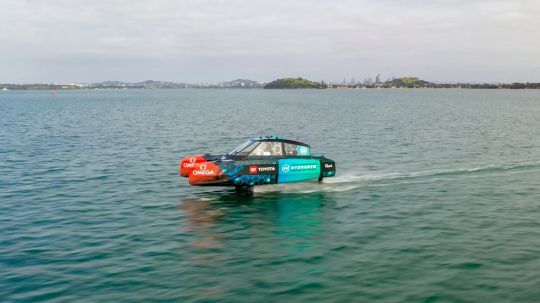
The hydrogen fuel cell technology developed by the engine manufacturer Toyota has been reliable for many years. The consistent production of hydrogen, with so-called green hydrogen without emissions during its production, on a large scale is still a problem to be solved, but this experience, as well as other European projects based on the same technology, lead us to imagine that this solution could become widespread on our pleasure boats.
